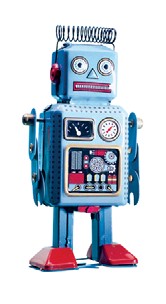ROBOTICS

GREGOR SCHUSTER/GETTY
In a major step forward, Japanese researchers have figured out a way to add living muscle to an artificial skeleton, creating a “biohybrid” robot. Shoji Takeuchi, a biomechanical engineer at the University of Tokyo, led a team that created finger like bone structures using a 3-D printer, then grew living muscle tissues between the bones. Their innovative method allowed muscle cells to progress in stages into fully functioning tissue. Further more, they were able to get the artificial bone to move by applying voltage to the muscle. It’s an exciting break through for anyone hoping to create a robot made from living materials. There are benefits for drug companies as well: It might reduce the need for animal testing when studying the effects of experimental drugs on muscles.